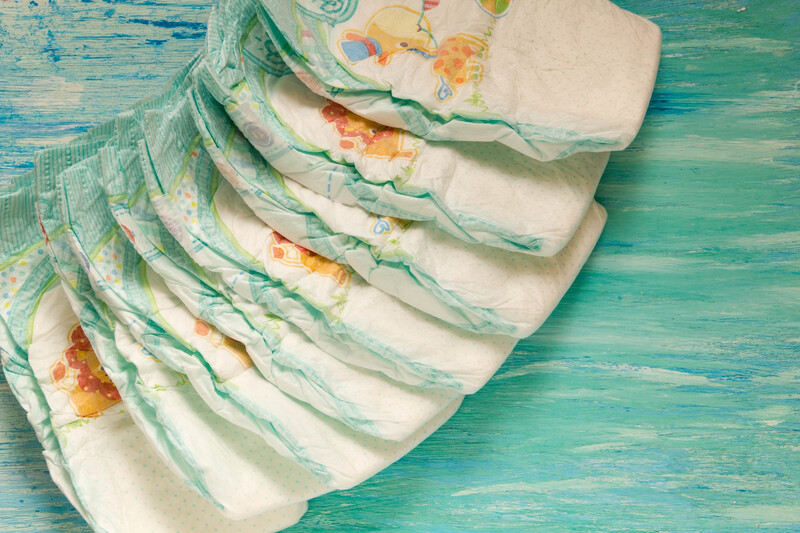Fighting Back: Can We Put an End to Microplastic Pollution
Posted on 28/08/2025
Fighting Back: Can We Put an End to Microplastic Pollution?
Microplastic pollution has become one of the most concerning environmental issues of the 21st century. Each year, an estimated 14 million tons of plastic waste end up in our oceans alone, and a significant portion of this waste consists of microplastics. These tiny, persistent particles have infiltrated every corner of the planet-- from mountaintops to deep ocean trenches, from drinking water to the food we eat. But can humanity truly put an end to this pervasive threat? In this comprehensive guide, we explore the origins of microplastic pollution, its impacts, and the innovative solutions that are helping us fight back against this global problem.
What Are Microplastics?
Microplastics are defined as plastic particles measuring less than 5 millimeters in diameter. They are often classified into two main types:
- Primary microplastics: Manufactured at a small size for use in products like cosmetics (microbeads), synthetic clothing fibers, and industrial abrasives.
- Secondary microplastics: Derived from the breakdown of larger plastic items such as bottles, bags, fishing nets, and packaging materials.
Despite their minute size, microplastics have a gigantic impact on our environment and health. They are virtually indestructible, easily transported by wind or water, and can absorb harmful chemicals from their surroundings.

How Microplastics Enter Our Environment
The pathways for microplastic contamination are numerous and insidious:
- Improper disposal of plastic waste leads to environmental breakdown.
- Washing synthetic clothing in washing machines releases fibers directly into wastewater that treatment plants often can't filter out.
- Tyre abrasion from vehicles sheds rubber and plastic particles onto roads, which are then washed into drains by rain.
- Personal care products like scrubs and toothpastes, which historically contained microbeads, release plastics directly into water bodies.
- Industrial processes generate tiny plastic fragments during manufacturing or transportation.
Once microplastics enter our rivers, lakes, and oceans, they become virtually impossible to remove completely. They also break down further into smaller particles called nanoplastics, which may pose even greater threats.
The Effects of Microplastic Pollution
Impact on Marine Life
Marine animals, from plankton to whales, are directly impacted by microplastic pollution:
- Plankton mistakenly ingest microplastics, which can block their digestive tracts and decrease their energy reserves.
- Fish and shellfish accumulate microplastics in their bodies, which may move up the food chain.
- Birds and mammals, such as turtles and dolphins, may ingest plastics or become entangled in plastic debris, leading to injury, drowning, or death.
Human Health Risks
Researchers have detected microplastics in tap water, bottled water, sea salt, beer, and even the air we breathe. Although the full health impacts are still under investigation, concerns include:
- Physical harm from ingesting or inhaling plastic particles.
- Potential for plastics to carry harmful chemicals, such as PCBs, pesticides, and heavy metals, into the human body.
- Liver, reproductive, and developmental toxicity linked to certain plastic additives, such as bisphenol A (BPA) and phthalates.
Environmental and Economic Costs
The spread of microplastic pollution undermines ecosystems, tourism, and even global food security:
- Plastic-soaked beaches drive away visitors and damage local economies.
- Damage to fisheries and aquaculture industries, with potential long-term effects on food supply.
- Costly pollution clean-ups and public health interventions.
Why Is Microplastic Pollution So Difficult to Eliminate?
Microplastic mitigation is a formidable challenge for a number of reasons:
- Microplastics are tiny and widespread, making detection and removal complex and costly.
- Many wastewater treatment facilities are not equipped to filter out micro-sized particles.
- There is a continuous input of new microplastics, primarily from poorly managed waste and ongoing plastic production.
- Plastic manufacturing is deeply integrated into industries and daily life worldwide, complicating regulatory efforts.
Innovative Solutions: Fighting Back Against Microplastic Pollution
Despite the challenges, efforts to combat microplastic contamination have gained momentum. Here are some promising developments:
Research and Technology Advances
- Improved filtration systems: New membranes and filters for washing machines and wastewater treatment plants can trap microplastics before they reach natural water bodies.
- Biodegradable materials: Scientists are developing genuine alternatives to conventional plastics, including bioplastics derived from algae, corn starch, or fungi.
- Enzymatic breakdown: Certain bacteria and enzymes can "eat" plastics, breaking them down into harmless by-products.
- Magnetic extraction: Research has introduced magnetic nano-bots and coagulants that can bind to microplastics, allowing them to be removed from water with magnets.
- Environmental cleanup "robots": Drones and aquatic robots are being deployed in rivers and lakes to collect and remove floating debris, including some microplastics.
Policy, Regulation, and Industry Accountability
- Bans on microbeads: Regions like the European Union, UK, and US have implemented bans on microplastic beads in personal care products.
- Extended producer responsibility (EPR): New regulations require companies to manage the entire lifecycle of their products, including post-consumer plastic waste.
- Plastic reduction targets: Municipalities and nations are setting ambitious goals to cut single-use plastics from commerce.
- Standardized labeling and recycling: Clearer labeling helps consumers recycle properly, reducing the number of plastics that become litter and eventually microplastics.
Consumer-Level Actions
Individuals also play a crucial role in reducing microplastic emissions. Here's what you can do:
- Reduce plastic usage: Opt for reusable bags, bottles, and containers.
- Choose natural fibers: Select clothes made from cotton, wool, or other biodegradable materials instead of synthetics.
- Use a microfiber filter bag in washing machines to capture shedding fibers.
- Avoid products containing microplastics: Check labels for polyethylene or polypropylene in cosmetics and personal care items.
- Dispose of plastics responsibly: Properly sort and recycle plastic waste, and participate in community clean-ups.
- Stay informed and advocate: Support policies and brands that are committed to reducing microplastics pollution.
The Global Effort: International Initiatives and Collaboration
Ending microplastic pollution demands a coordinated global response. Here are some notable examples:
- The UN Environment Programme's Clean Seas campaign galvanizes countries and businesses to cut plastic use and improve waste management.
- The G7 and G20 Microplastics Initiatives have called for harmonized research and international action plans.
- Ocean clean-up projects like The Ocean Cleanup deploy large-scale barriers to collect floating plastics before they degrade into microplastics.
- Scientific collaborations: Universities and research institutions share data and best practices in tracking and removing microplastics from ecosystems.
Challenges Ahead: The Roadblocks to a Microplastic-Free Future
While progress is being made, major challenges remain:
- Detection and measurement: Accurately quantifying microplastic pollution is technically difficult and expensive.
- Lack of standard definitions and testing methods leads to inconsistencies in global data and regulation.
- Economic barriers: Developing countries face greater hurdles in enforcing bans, updating waste infrastructure, and adopting new technologies.
- Industry pushback: Plastic producers and some commercial sectors resist tighter regulations.
- Consumer habits: Widespread reliance on convenience plastics is hard to change overnight.

Can We Really Put an End to Microplastic Pollution?
Realistically, completely eliminating microplastic pollution in the near future may not be possible. However, significant reduction is within our reach. Success will depend on:
- Widespread adoption of circular economy models--where products are designed, reused, and recycled to minimize waste.
- Science-driven policy that adapts to new evidence and prioritizes long-term planetary health over short-term economic gain.
- Continued innovation in filtration, materials science, and environmental restoration.
- Global cooperation and information sharing to harmonize standards and enforcement.
- Individual commitment to making sustainable choices and advocating for systemic change.
Conclusion: Fighting Back for Our Future
Fighting back against microplastic pollution is not just an environmental imperative-- it's about safeguarding public health, protecting food security, and ensuring the long-term resilience of our planet. By supporting policies that regulate plastics, encouraging innovation, and making conscious personal choices, we can join the frontlines of the fight. Ending microplastic pollution is a colossal task, but every step forward brings us closer to a cleaner, safer, and more sustainable world.
Every action matters. Together, we can fight back. The time to act is now.

 020 3859 5580
020 3859 5580 020 3859 5580
020 3859 5580





 House Clearance
House Clearance Rubbish Collection
Rubbish Collection House clearance in London has never been easier, as Junk Removal Services can take care of your every need. From individual house junk...
House clearance in London has never been easier, as Junk Removal Services can take care of your every need. From individual house junk... With Junk Removal Services you can be confident that you’ll receive the most professional and affordable rubbish collection service within the London...
With Junk Removal Services you can be confident that you’ll receive the most professional and affordable rubbish collection service within the London...





